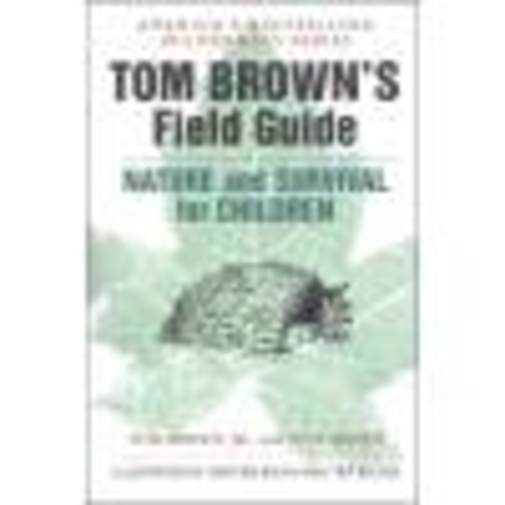We use cookies to make your experience better. To comply with the new e-Privacy directive, we need to ask for your consent to set the cookies. Learn more.
Tom Brown's Field Guide to Nature and Survival for Children
If you are serious about providing your children the tools to observe, enjoy, and survive in nature, this book will be an invaluable resource. Some of the same information is presented here as is found in Wilderness Survival above, but the emphasis here is more on learning those skills and passing them on to your children. The book is written to parents as teachers, not to children themselves, so you will need to read through it first (and maybe practice a little) before you can begin teaching. It is not a "pick-up-and-go" kind of resource rather it is an investment of time for you and your children. The book is presented in two parts; in Part One, the emphasis is on awareness, and in Part Two, the emphasis is on survival. According to the author, awareness is the root that all nature survival skills stem from; without it, we cannot fully observe, appreciate or understand nature. Working against awareness are the contrivances of modern life, including television, books, regimented school routines, and video games. Although this is a skill that is difficult to "teach" in the traditional way, the chapters in this section offer parents ideas and suggestions to help children learn this skill, and identify hindrances that can prevent our awareness. Chapters in this section cover the senses, "moving" in nature (or how to quietly walk to observe), tracking, observing animals and plants, and observing nature around the home. Several games to teach awareness are also included. The second part of the book follows the same order of importance as Wilderness Survival. After an introduction that offers advice on teaching children survival skills in a positive way, chapters cover "lostproofing" (or how not to get lost), basic camping skills, finding or building shelter, finding and purifying water, building and maintaining a fire, finding and preparing food, taking care of the earth, survival games, and safety and first aid. As in Wilderness Survival, outdoor living and survival skills are the author's way of life. If you've never even been camping, his whole philosophy can be overwhelming; however, there is tons of practical information here, and it's presented in an equally practical but fascinating way. 228 pgs, pb. Jess
| Product Format: | Softcover Book |
|---|---|
| Brand: | Berkley |
| Author: | Tom & Judy Brown |
| Grades: | 3-6 |
| ISBN: | 9780425111062 |
| Length in Inches: | 9 |
| Width in Inches: | 6 |
| Height in Inches: | 0.5 |
| Weight in Pounds: | 0.6 |

